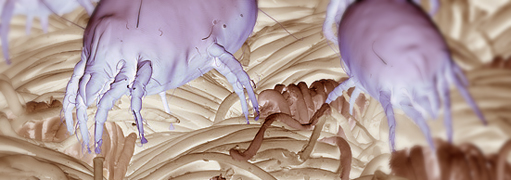Twenty years ago, I would get maybe one call a month about someone who said they felt imaginary bugs crawling on them. Most pest control people get these inquiries on occasion. We called it Delusional Parasitosis and recommended a psychologist. About 10 years ago, the calls increased to one per week or so. Today, I get them almost on a daily basis. I began to suspect that the problem was a real, physical one. I coined the term Invisible Biting Bug Syndrome. The condition is similar to Morgellons Disease, which was named in 2002 and includes symptoms of feeling crawling and biting sensations, skin lesions, and finding fibers under the skin. People suffering from it sought help from the Centers for Disease Control and Prevention. But earlier this year, the CDC released results of a four-year study that indicated there is no clear cause of the syndrome. Many doctors still do not take this condition seriously and chalk it up to a mental disorder.Still, I get letters on a regular basis, like this one: “I am being eaten alive by mites. I think these teeny-weeny, black/gray specs are bugs. I thought bedbugs, but I see no blood anywhere except on my body, where I scratch myself in the morning. Yes, I put Cortizone on. … I have to use a lamp and glasses to see them. … “How can these teeny bugs do so much harm? What are they? My husband thinks I’m being neurotic. He doesn’t have any bites nor itches and sleeps next to me. He laughs at my complaints. I am wearing perfume to bed and spreading baby powder around but no relief.”Or this one:“God, I pray you are the one that can finally help me. People think I’m nuts. … I have been bitten to the point of insanity, and I spray an entire bottle of OFF on my body just to get into bed at night.” There are several possible causes of these symptoms, and one of them may be mites, though they’re rare. Occasionally people have pigeons or starlings or other birds nesting on their homes. If the birds leave and don’t return, the mites that may be in their nest could find their way into the home and bite the inhabitants. If you have rodents in your house, the same thing might happen if the critters die from poisoning or just don’t come back to their nesting area. The one bug that doesn’t affect humans—though it is said to by some companies that sell online remedies—is the springtail (Collembola). Springtails feed on decaying vegetation and do not bite or infest humans. If someone really is facing a mite issue, there are treatment options that don’t rely on pesticides. But there are other possible causes of Invisible Biting Bug Syndrome. Pollutants in the air could be reacting with skin cells in a negative way. Pesticides might also be a factor. Even if you avoid pesticides at home, they can be used around public buildings. While the active ingredient in the pesticide may break down, there are a number of inert ingredients that may be more resilient in the atmosphere. Pesticides have been linked to Parkinson’s disease, as well as some genital abnormalities in babies. Exposure to pesticides can cause many of the symptoms people are complaining about. There is evidence coming out now that Morgellons might also be caused by eating genetically modified foods. This hypothesis will require a lot more research. But the implication is that the chemicals in the GM foods can cause your nervous system to send messages to your brain that something is biting you or crawling on your skin. Morgellons sufferers also have open lesions that heal slowly and that have black, blue or white fibers growing out of their skin. These fibers appear like plastic and they can be as fine as spider silk. They can be very painful to pull out. A research team from Oklahoma State University led by Dr. Randy Wymore studied the fibers. They found that the fibers from different sources appear to be similar, yet do not match any common environmental fibers. Vitaly Citovsky, professor of Biochemistry and Cell Biology at Stony Brook University in New York, discovered that the all of fibers contained the substance Agrobacterium, which can transfer DNA and is used in genetically modified food. This is certainly not a psychological disorder but a physical disorder caused by chemicals. You may want to start eating organic foods and stay away from any GM foods. Realistically it may not be possible to avoid them all, as the food-makers aren’t required to label their foods as genetically modified. Shop at health food stores whenever possible and avoid any meat that comes from factory farms as it is loaded with chemicals. And never let a pest control person spray pesticides in your home—especially not indoors.
Richard “Bugman” Fagerlund is a nontoxic pest management consultant. He can be reached at askthebugman@yahoo.com. Visit his website, askthebugman.com. He likes snakes.The opinions expressed are solely those of the author.







